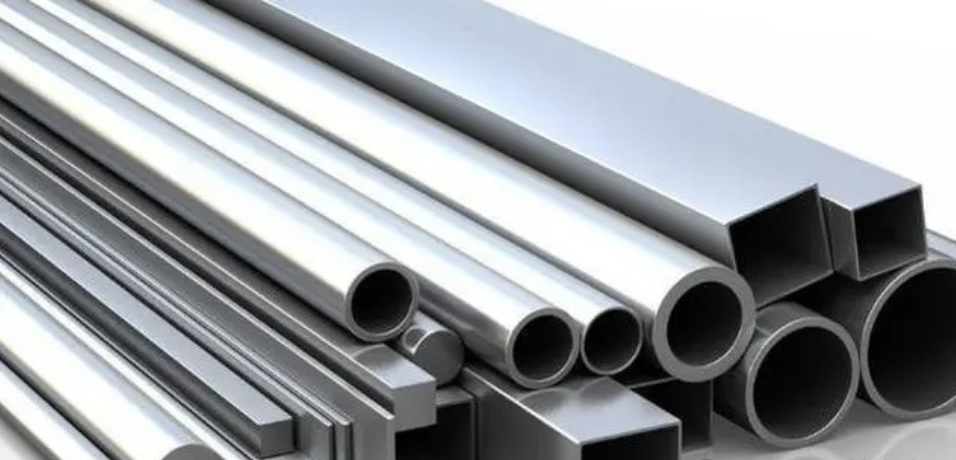
of TC4 Titanium Alloy
TC4 titanium alloy (Ti-6Al-4V) is a typical α+β type duplex titanium alloy that has found widespread application in aerospace, shipbuilding, automotive, and other industries due to its excellent specific strength, good corrosion resistance, and weldability. In high-stress service environments, shear strength and shear modulus are critical mechanical properties for evaluating the resistance of structural components to shear failure and deformation behavior, playing a crucial role in ensuring component reliability and structural integrity.
A.Basic material properties
Chemical composition: TC4 titanium alloy mainly consists of Ti-6Al-4V, with approximately 6% aluminum (Al) and 4% vanadium (V), and the remainder being titanium.(Ti)
Microstructure: This alloy consists of an α phase (hexagonal close-packed HCP structure) and a β phase (body-centered cubic BCC structure). The α phase provides high-temperature strength stability, while the β phase contributes good ductility and toughness. The specific microstructural morphology (such as phase ratio, grain size, and distribution) can be controlled through heat treatment and processing techniques.
B.Analysis of core mechanical performance parameters
Shear strength characteristics Shear strength: Under room temperature conditions, the shear strength of TC4 titanium alloy typically ranges from 550 MPa to 600 MPa. This performance decreases significantly with increasing temperature; for example, at 400°C, the value drops to approximately 450 MPa to 480 MPa.
Shear yield strength: The critical stress at which a material undergoes shear plastic deformation. The room-temperature shear yield strength of TC4 titanium alloy is approximately 300 MPa to 350 MPa. At high temperatures above 300°C, this value decreases to approximately 70%-80% of the room-temperature level. Strain rate effect: TC4 titanium alloy exhibits positive strain rate sensitivity in its shear properties. As the strain rate increases, both its shear strength and shear yield strength show an upward trend, enabling it to maintain relatively high shear resistance under high strain rate impact loads.
Shear modulus characteristics definition and calculation: The shear modulus (G) characterizes a material’s ability to resist elastic shear deformation and serves as a measure of material stiffness. Its value can be calculated using Young’s modulus (E) and Poisson’s ratio (ν): G = E / [2(1 + ν)]. Room temperature values: The room temperature Young’s modulus of TC4 titanium alloy is approximately 110 GPa, with a Poisson’s ratio of approximately 0.33, resulting in a calculated shear modulus of approximately 41 GPa. Temperature Dependency: The shear modulus decreases with increasing temperature. At 300°C, it decreases to approximately 35 GPa, and further decreases to approximately 30 GPa at 500°C. This indicates that the material’s ability to resist elastic shear deformation weakens at high temperatures.
C.Main factors affecting shear performance and shear modulus
Microstructure: The relative proportions, sizes, morphologies, and distributions of α-phase and β-phase have a significant impact on shear strength and shear modulus. For example, obtaining a fine, uniformly distributed α-phase and β-phase microstructure through process optimization typically helps to improve shear strength and shear modulus.
Loading conditions: Strain rate: As mentioned above, high strain rates typically increase shear strength. Temperature: High temperatures cause a comprehensive decrease in shear strength, shear yield strength, and shear modulus. Stress state: Complex stress paths may affect actual performance.
Heat treatment process: Heat treatment is a key method for controlling the properties of TC4 titanium alloy. Quenching in the β phase region: This can increase shear strength. Aging treatment: This is often used to optimize comprehensive mechanical properties and may increase shear modulus. Annealing treatment: This affects the microstructure, which in turn affects various properties.
D.Experimental characterization and engineering application considerations
Experimental method: The shear properties of TC4 titanium alloy are typically determined using standardized test methods (such as double shear tests and V-notch tests), with an electronic universal testing machine used to apply load and record the load-displacement curve
Typical data: Under room temperature double shear testing, typical performance data for TC4 titanium alloy includes: shear strength of approximately 580 MPa, shear yield strength of approximately 320 MPa, and fracture shear strain of up to 0.25. These data provide a basis for engineering design.
Key points for engineering applications:
Aerospace: Used in airframe structural components (such as fasteners and connectors) and engine components (such as compressor discs and blades). Design considerations should focus on shear strength to ensure connection reliability, as well as the impact of shear modulus on overall structural stiffness. High-temperature performance degradation must be included in calculations.
Shipbuilding and marine engineering: Suitable for propellers, shaft systems, pressure-resistant hull components, seawater piping systems, etc. Its excellent resistance to seawater corrosion combined with good shear strength (especially under dynamic loads) is a key advantage. Attention should be paid to performance stability during long-term service.
Automotive industry: Used in high-performance engine connecting rods, suspension system components, racing transmission parts, etc. High shear strength ensures the reliability of power transmission components, while high shear modulus helps maintain component geometric accuracy and dynamic response characteristics. Cost-effectiveness analysis is an important consideration.
The shear strength and shear modulus of TC4 titanium alloy (Ti-6Al-4V) are important mechanical property indicators, significantly influenced by material fundamental characteristics (composition, microstructure), external loading conditions (temperature, strain rate), and processing heat treatment processes. Performance data obtained through standard testing methods, combined with an understanding of the influencing factors, provide critical design inputs and safety margin assessment criteria for engineering applications in aerospace, marine, automotive, and other industries. In specific applications, it is necessary to select the appropriate material condition (heat treatment process) based on the service environment (temperature, load spectrum, medium) and performance requirements, and to accurately assess its performance characteristics.

